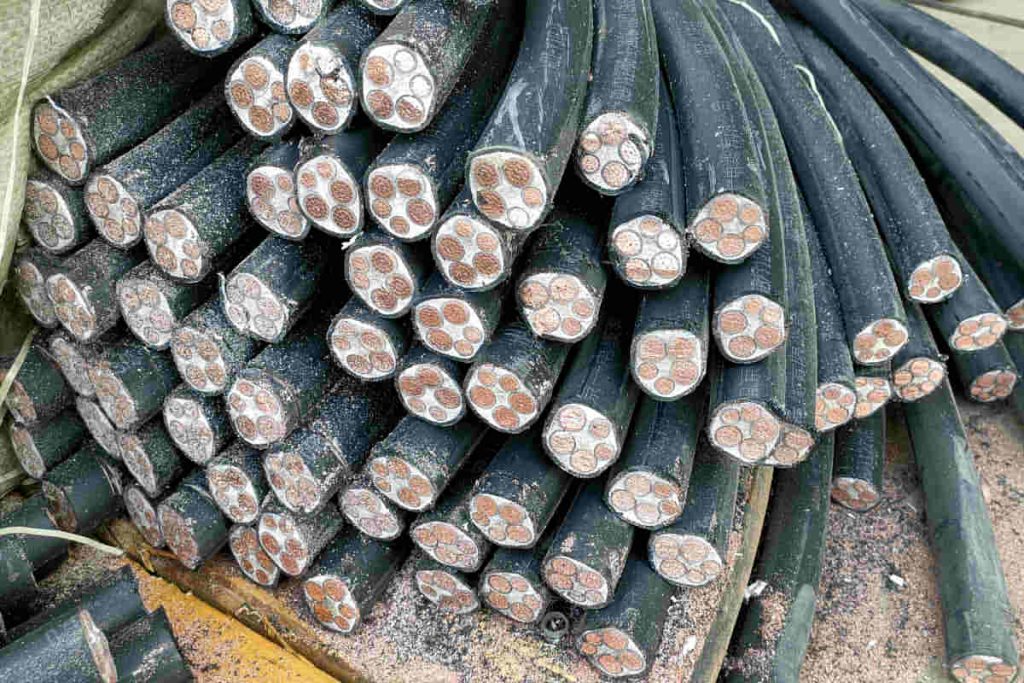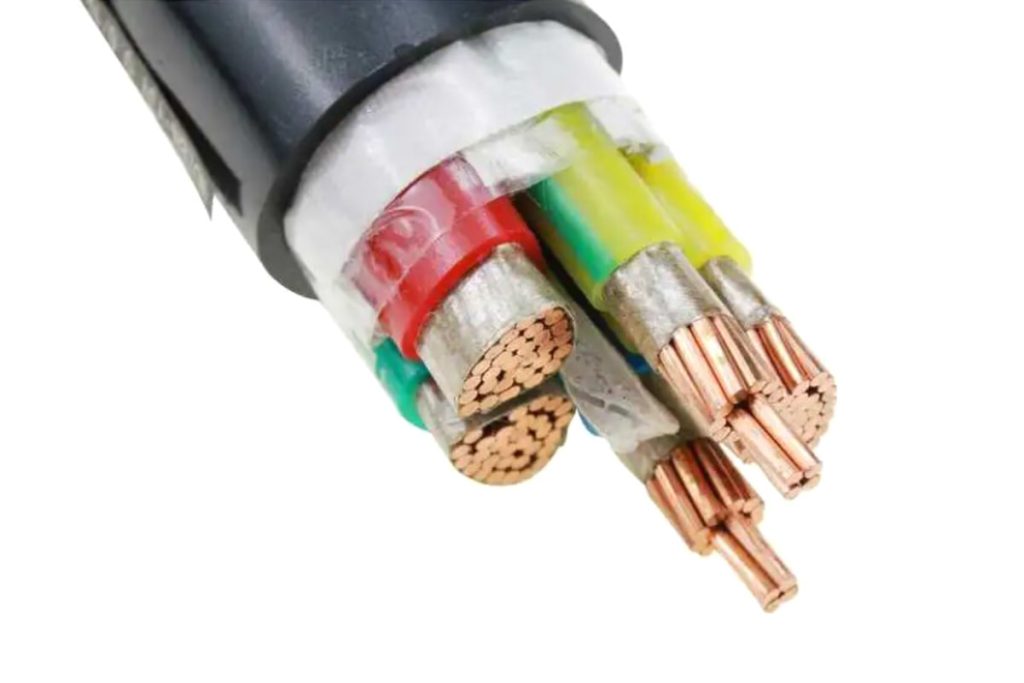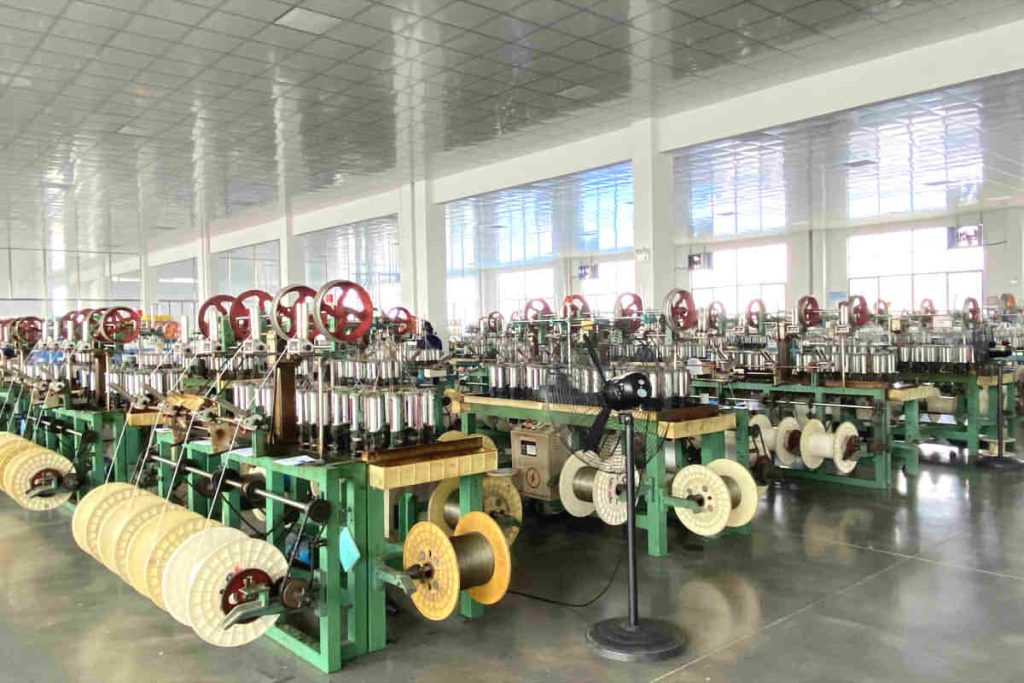The global wire and cable market, vital for multiple industrial sectors, is experiencing significant growth. It is projected to reach 285 billion dollars for 2031, driven by technological advances and growing demand in various industries.

Table of Contents
- Market Dynamics
- Market segmentation
- Preference for High Quality Metals
- Competitive Market Structure
- Future Challenges and Market Regulations
- Environmental and Social Impact
- Future perspectives
- Emerging Technologies in the Manufacturing of Cables and Wires
- Conclusion
Market Dynamics
Growth and Current Trends
The wire and cable market, valued at 150.02 billion dollars in 2020, is projected to grow at a compound annual rate of 5.3% until 2031. This growth is driven by increasing digitalization, the demand for electrification and efficient heating, and the need for more robust transportation infrastructure.
Key Market Drivers
- Digitization and Global Electrification: The transition towards digitalization and electrification in various sectors is increasing the demand for high quality cables.
- Urbanization and Infrastructure Construction: The increase in urbanization and the construction of new transportation infrastructure, such as roads and railways, is driving demand in the market.
Challenges and Limitations
- Fluctuations in Metal Prices: Changes in prices of key metals such as copper and aluminum affect the market.
- Need for Continuous Innovation: Rapid technological evolution requires constant innovation in products and manufacturing processes.
Market segmentation
By Type and Material
The wire and cable market is divided into segments such as low cables, medium and high voltage, and fiber optic cables, with materials including copper, aluminum, and fiber optic.

By Industry
Major industries include aerospace, defending, building, IT and telecommunications, Energy, oil and gas, Consumer electronics, and automotive.
Preference for High Quality Metals
Innovations in Materials
Wire and cable manufacturers are prioritizing high-quality metals to improve efficiency and product quality, which leads to innovations in manufacturing and product design.
Impact on Production
The use of premium metals is leading to more advanced manufacturing methods and greater reliance on sophisticated analytical techniques to manage market volatility..
Competitive Market Structure
Competition Overview
The market is characterized by high fragmentation with numerous players, including leading companies such as LS Cabel & System Ltd., Heng Tong Cable Co., Ltd., Sumitomo Electric Industries, Ltd., Prysmian Group y ZMS Cable Co., Ltd..
Growth Strategies
Strategies include innovative product launches, mergers, acquisitions, and expansion of production capacities to strengthen market position.
Future Challenges and Market Regulations
Facing Environmental and Regulatory Challenges
The market must adapt to environmental regulations and sustainability expectations, which implies challenges in terms of materials and production processes.
Advances in Regulations and Compliance
Companies must comply with global and local regulations, what influences your operations and market strategies.
Environmental and Social Impact
Sustainability in Manufacturing
Focus on sustainable practices is gaining importance, with an emphasis on reducing environmental impact and efficient use of resources.

Corporate Social Responsibility
Companies are increasingly focused on social responsibility, which includes ethical practices in material procurement and production.
Future perspectives
Innovations and Technological Developments
Innovation in manufacturing technology and cable materials is key to future market growth.
Impact on Emerging Economies
Developing economies offer new market opportunities, especially in sectors such as construction and transportation.
Emerging Technologies in the Manufacturing of Cables and Wires
In the dynamic wire and cable manufacturing sector, Emerging technologies are playing a crucial role in the transformation of production processes, improving efficiency, quality and sustainability. These technological advances not only respond to growing market demands, They are also opening new avenues for innovative applications in various industrial sectors..
Nanotechnology in Wiring Materials
One of the most significant innovations is the incorporation of nanotechnology in wiring materials. nanomaterials, due to its extremely small size and unique properties, are allowing the development of cables and wires with better electrical conductivity, greater heat resistance and lower weight. This is especially beneficial in applications where weight and energy efficiency are critical., such as in the aerospace industry and in electric vehicles.
Advanced Isolation Techniques
Advances in insulation techniques are revolutionizing the safety and efficiency of cables and wires.. Improved insulating materials, such as high performance polymers and hybrid composites, they are increasing the durability of the cables, reducing energy losses and improving its ability to withstand adverse environmental conditions. These advanced materials are also contributing to greater flexibility and ease of installation..
Smart Manufacturing and Automation
The smart manufacturing integration and automation in the production of cables and wires is allowing greater precision and efficiency in manufacturing. The use of robots and automated control systems not only optimizes the production process, but also minimizes human errors, improves product consistency and reduces labor costs.

Real-Time Monitoring and Quality Control Systems
The development of real-time monitoring systems and advanced quality control technologies is significantly improving product integrity and reliability.. These technologies allow defects to be detected during the manufacturing process, ensuring that only products that meet the highest standards reach the market. Besides, Integrating smart sensors into cables can provide valuable information about cable performance and condition during use.
Recycling and Sustainability
Sustainability has become a crucial aspect in the manufacture of cables and wires. Emerging technologies are making it easier to recycle materials, like copper and aluminum, and the use of biodegradable or recycled materials in the production of cables. These advances not only reduce the environmental impact, They also address growing concerns about raw material shortages and material costs..
Improved Connectivity and Communications
Demand for higher data speeds and capacity is driving the development of next-generation fiber optic cables. Emerging technologies in fiber optic manufacturing are allowing cables with higher bandwidth, lower attenuation and better resistance to external interference, which is essential for telecommunications infrastructure and the expansion of 5G networks.
The integration of these emerging technologies is not only improving capabilities and efficiency in wire and cable manufacturing, It is also opening up new possibilities for application in a variety of industries..
Conclusion
The wire and cable market is on a path of sustained growth, driven by technological innovation and global infrastructure expansion. As the world moves towards greater digitalization and electrification, This market plays a crucial role in the development of sustainable and efficient infrastructures.

